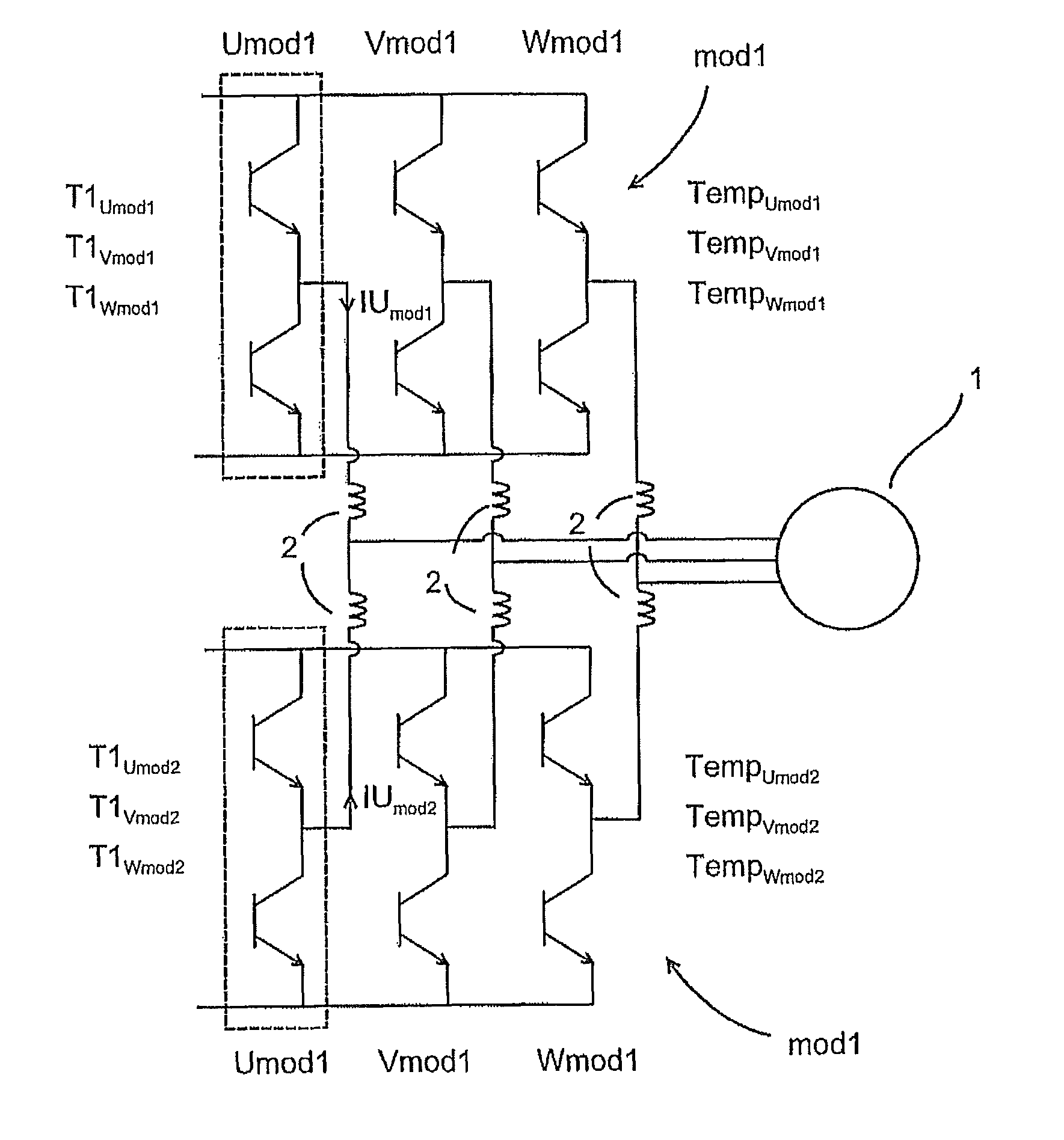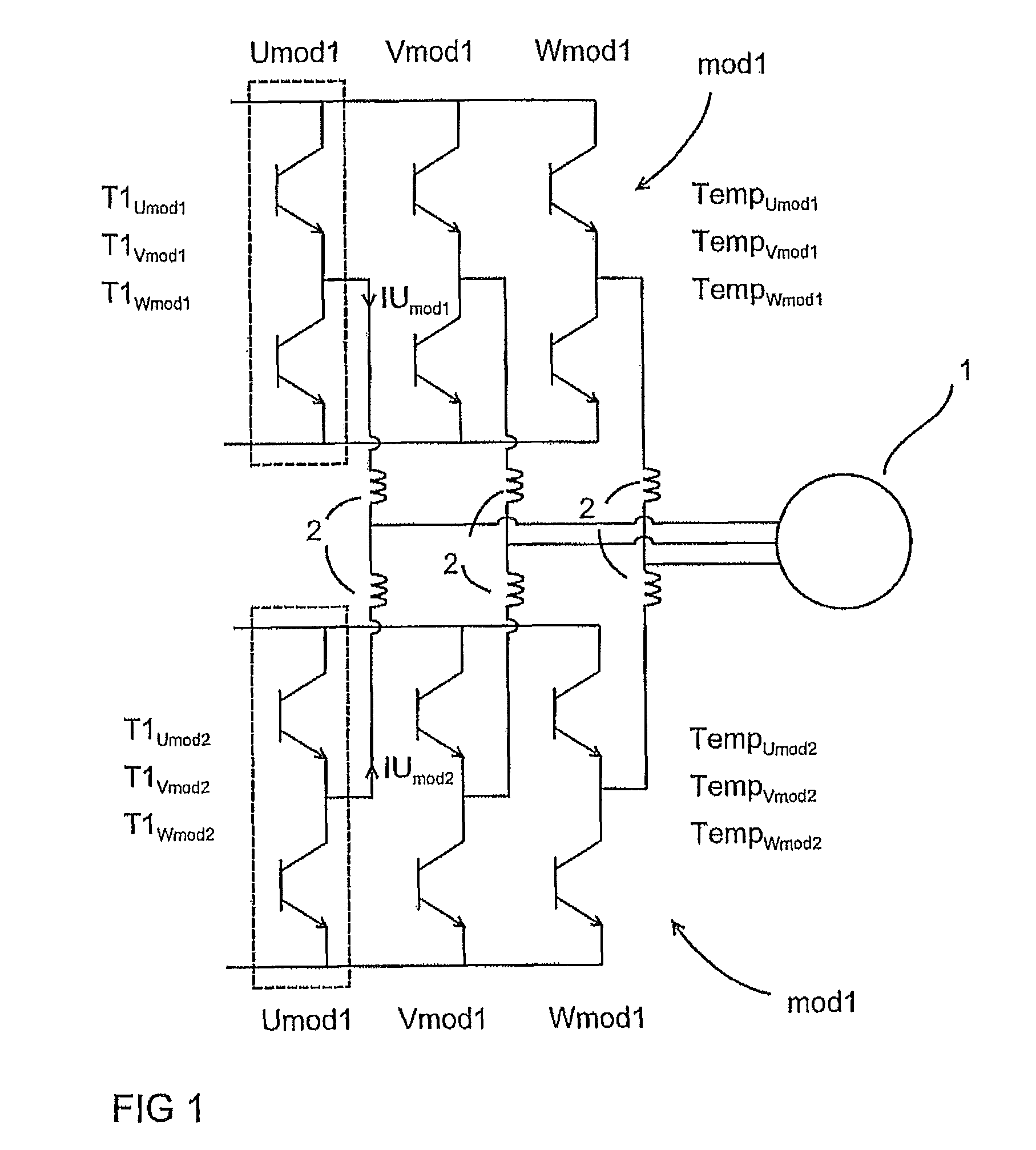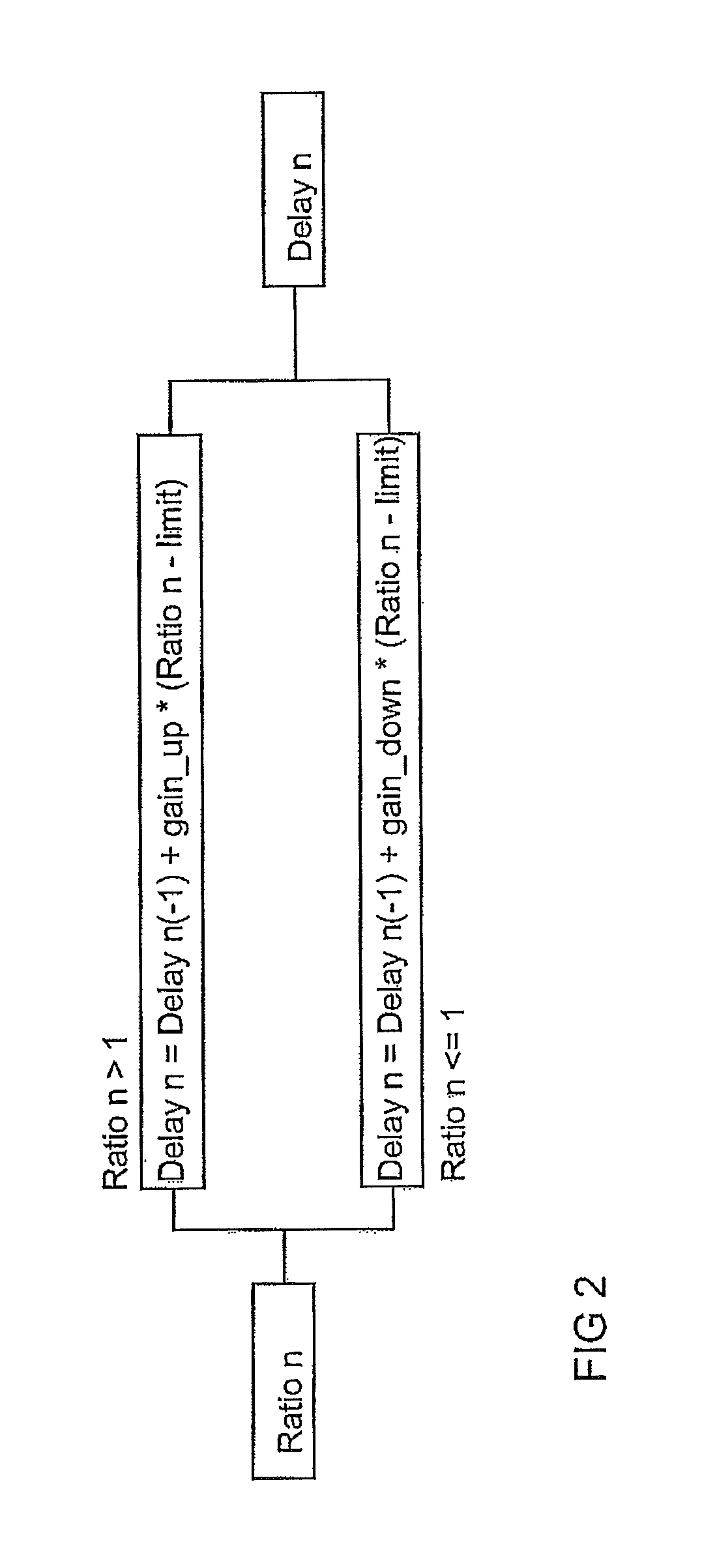Load balancing of parallel connected inverter modules
a technology of parallel connected inverter modules and load balancing, which is applied in the direction of electronic switching, dc-ac conversion without reversal, pulse technique, etc., can solve the problems of uneven stress on the components, premature wear of the switch components with higher current, and uneven wear of the parallel operated switch components
- Summary
- Abstract
- Description
- Claims
- Application Information
AI Technical Summary
Benefits of technology
Problems solved by technology
Method used
Image
Examples
Embodiment Construction
[0015]Exemplary embodiments as discussed herein are based on the idea of balancing the loading between parallel inverter modules by modifying the turn-on or turn-off pulses on the basis of current imbalance and temperature differences between the modules. As disclosed herein, the currents between the inverter modules need not be driven to same value if the temperatures of the modules differ from each other.
[0016]According to exemplary embodiments, current imbalance can be kept within a certain limit and the temperatures of the different output modules can also be kept in control. The fact that the currents are not completely balanced is of less importance since the current imbalance, if not taken into account, may lead to premature wear or sudden destruction of the components due to heating up of the components. When the temperatures of the components are taken into account in current balancing, the parallel currents do not have to be equal in magnitude.
[0017]FIG. 1 shows two parall...
PUM
 Login to View More
Login to View More Abstract
Description
Claims
Application Information
 Login to View More
Login to View More - R&D
- Intellectual Property
- Life Sciences
- Materials
- Tech Scout
- Unparalleled Data Quality
- Higher Quality Content
- 60% Fewer Hallucinations
Browse by: Latest US Patents, China's latest patents, Technical Efficacy Thesaurus, Application Domain, Technology Topic, Popular Technical Reports.
© 2025 PatSnap. All rights reserved.Legal|Privacy policy|Modern Slavery Act Transparency Statement|Sitemap|About US| Contact US: help@patsnap.com



